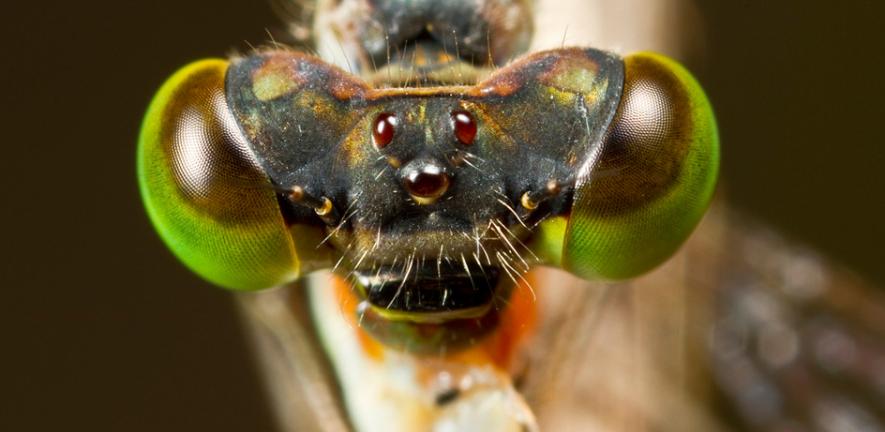
Researchers discover an ‘atmospheric imprint’ in insects, revealing where they are most likely to survive should climate change alter their ecosystem.
Researchers discover an ‘atmospheric imprint’ in insects, revealing where they are most likely to survive should climate change alter their ecosystem.
There is an urgent need for a better understanding of how global environmental change will affect threatened plants and animals.
Dr Farnon Ellwood
Scientists have discovered that insects contain atomic clues as to the habitats in which they are most able to survive. The research has important implications for predicting the effects of climate change on the insects, which make up three-quarters of the animal kingdom.
Applying a method previously only used to examine the possible effects of climate change on plants, scientists from the Departments of Plant Sciences and Zoology at the University of Cambridge have discovered a way to determine the climatic tolerances of individual insects. Their research was published today, 16 February, in the scientific journal Biology Letters.
Because insects are at constant risk of desiccation, they have a waterproof exoskeleton which protects them from dehydration. Therefore, measuring hydration levels in an insect gives little if no indication of the type of habitat they live in (for example, whether it is humid or dry). Moreover, most insects live in the undergrowth, or in the soil; in tropical rainforests the insects live many hundreds of feet up in the canopy, which makes it very difficult to observe them directly. Using the atmospheric imprint, it will now be possible to decipher the habitat preferences of individual insects no matter where they live.
By taking advantage of a unique property of the oxygen isotopes in water; namely that the isotopes behave differently during evaporation and condensation, the researchers were able to determine how much water an insect loses when it 'breathes' through holes in its outer skeleton called spiracles, providing important insight into the type of atmosphere (for example, humid like the rain forest) it could survive.
Water (H20) is made up of two types of oxygen - 18O and 16O. Because 16O is lighter, when water evaporates it leaves behind more 18O. Using cockroaches, the scientists measured the levels of the two different oxygens in the insects' circulatory fluid - called haemolymph - as well as in their outer skeleton. From this information they were able to determine how much water had evaporated and therefore identify the atmospheric conditions necessary for the insect to survive.
Insects living in a dry atmosphere have a higher concentration of 18O as a result of a greater water loss. Insects living in very humid conditions tend to lose less water and therefore have a nearly equal ratio of 16O to 18O. With this new method, researchers will be able to predict where species are most likely to survive (e.g. in Sahara-desert dry and rainforest humid), and will be able to pinpoint with great accuracy which species share the most similar niches.
"There is an urgent need for a better understanding of how global environmental change will affect threatened plants and animals," said Dr Farnon Ellwood, lead author of the paper. "If we can determine the habitat preferences of individual insects, we can use this information to predict how climate change will impact on a group representing three-quarters of the Earth's animal species."
This work is licensed under a Creative Commons Licence. If you use this content on your site please link back to this page.





